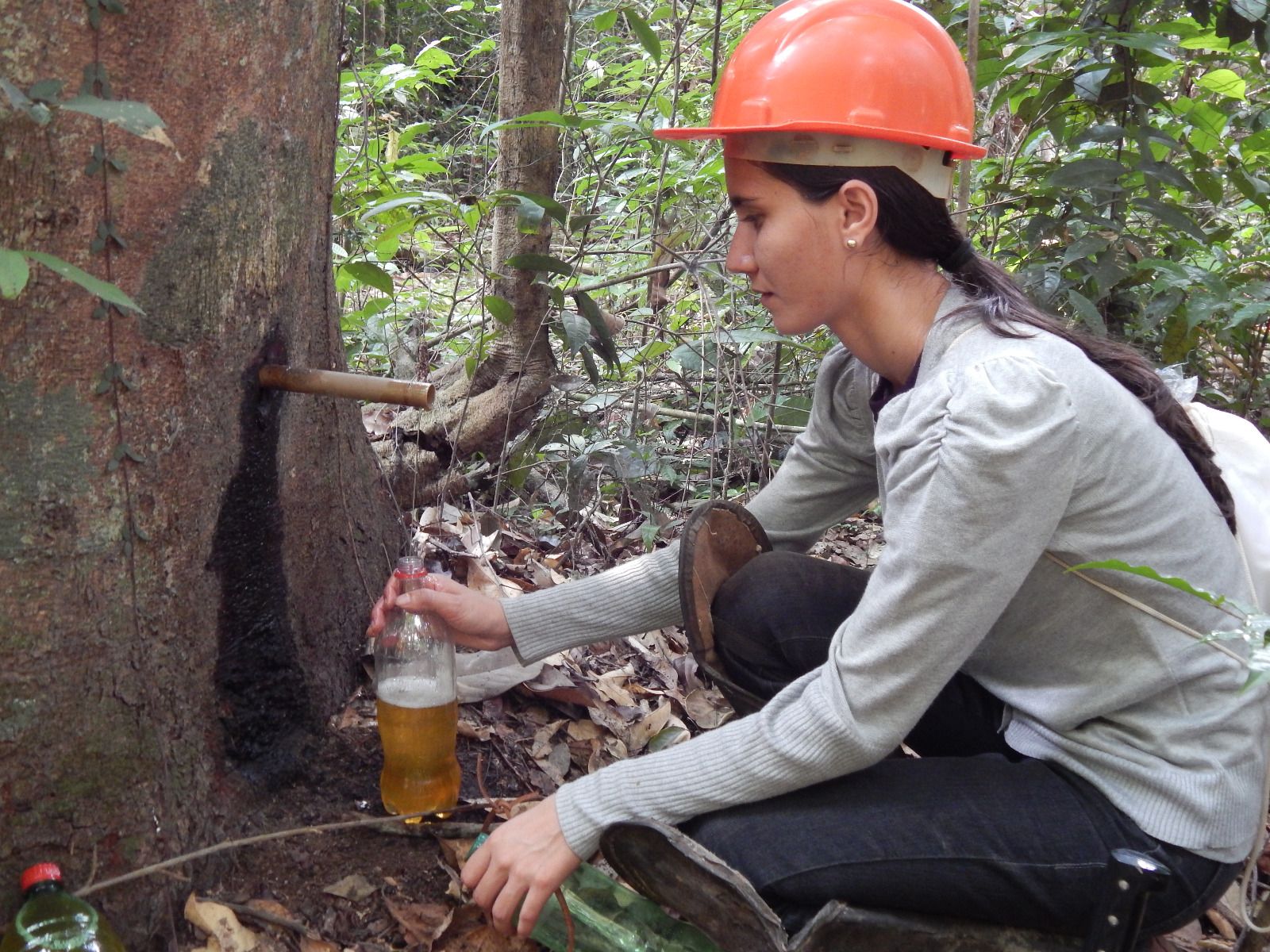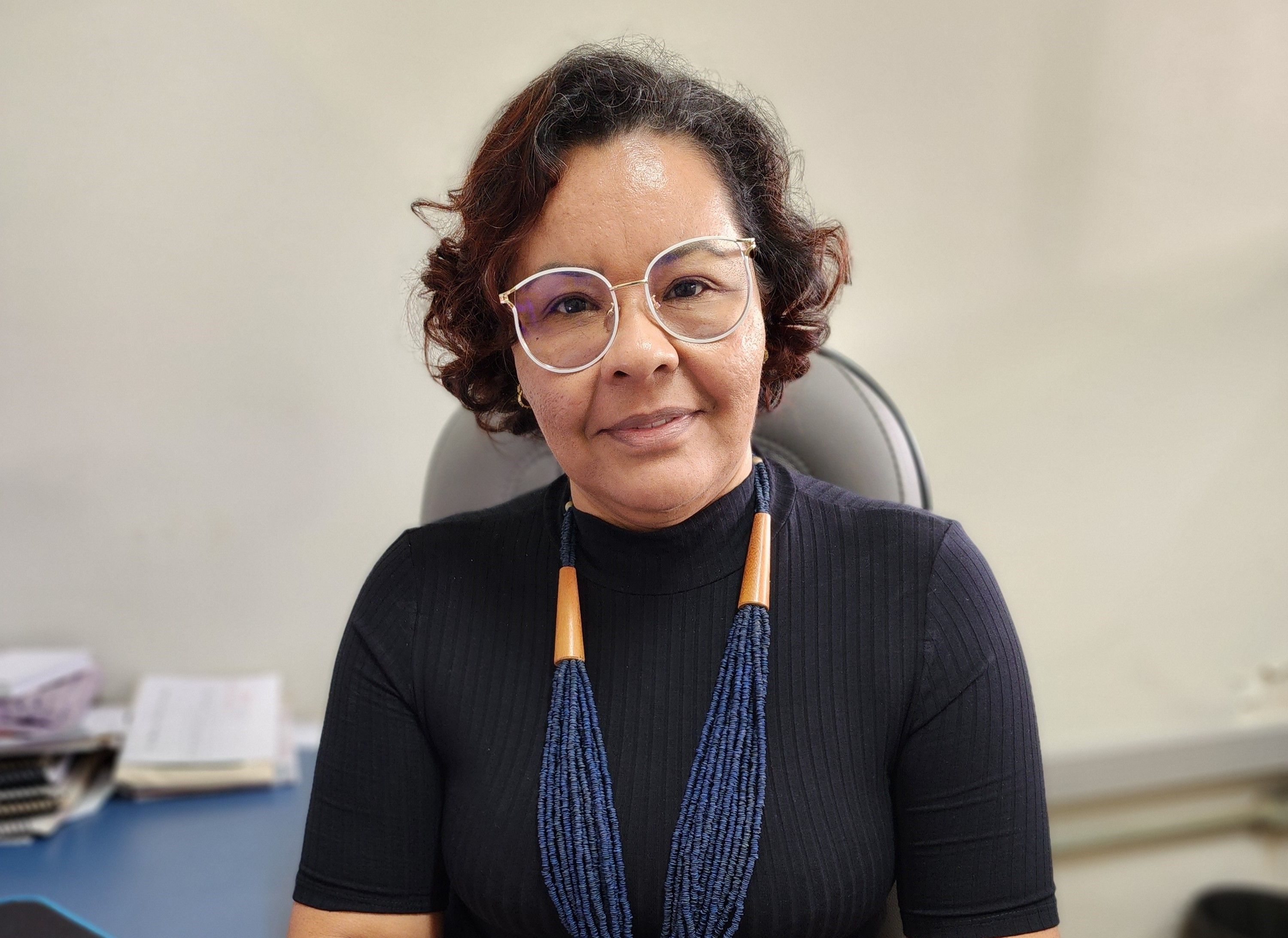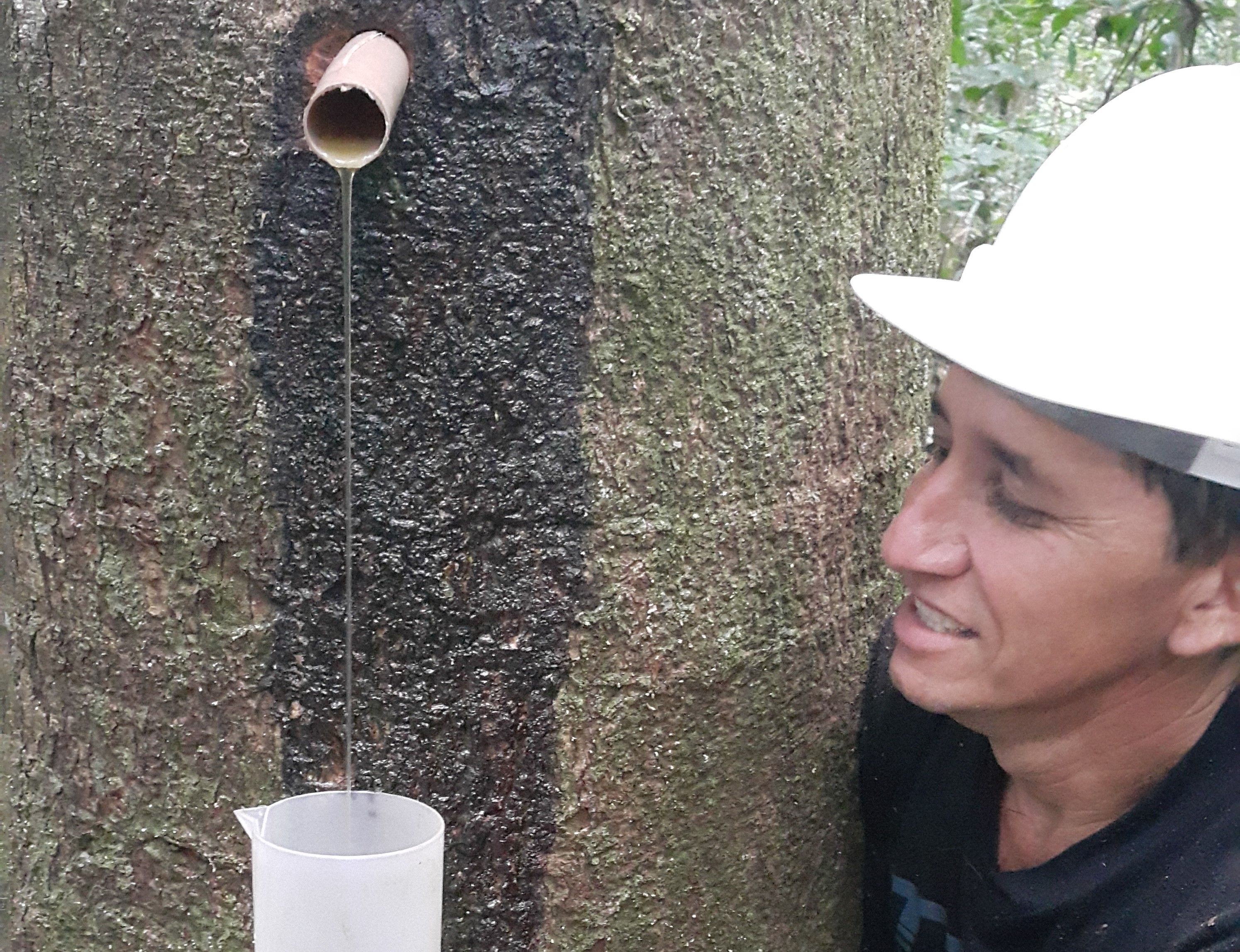Anyone from the Amazon has probably heard the expression “curar garganta” [to heal the throat] or even experienced it firsthand: a piece of cotton soaked in copaiba and andiroba oils, honey, lemon drops, and crushed garlic is applied directly to the back of the patient’s throat to treat inflammation. The procedure is far from pleasant, but both those who perform it and those who receive it swear by its effectiveness, it’s “tiro e queda” [a guaranteed solution] that brings quick relief.
The anti-inflammatory effect is partly due to the properties of copaiba oil, a long-time staple of traditional Amazonian medicine. What is known as oleoresin, extracted from various species of the Copaifera genus, is known for its anti-inflammatory, healing, antiseptic, and antimicrobial actions, all of which have been documented by science. Recent studies have also investigated its antitumor activity, making copaiba a promising natural ally in the fight against cancer.
The most recent research published on the subject was led by biologist Jhéssica Caetano Frota, a staff member at the Universidade Federal do Oeste do Pará - UFOPA [Federal University of Western Pará], who holds a Master’s degree in Biosciences from the same university and a PhD degree in Pharmaceutical Sciences from the Universidade Estadual de Campinas - UNICAMP [State University of Campinas]. Throughout her Master’s and PhD programs, Jhéssica investigated the antitumor and anti-inflammatory activities of copaiba oleoresin.
RESEARCH
Jhéssica is from Santarém, in the state of Pará, and is, therefore, familiar with the properties of copaiba oil according to the region's traditional medicine. "It's a natural product widely used in the Amazon region. This ethnopharmacological knowledge, passed down from our ancestors, has reached us and is still used therapeutically, especially as an anti-inflammatory and healing agent, among other uses. Given its great potential, the idea of studying this natural product’s anticancer activity capability arouse. I chose to research antitumor properties because, unfortunately, the incidence of cancer is currently increasing worldwide," she explains.
During her Master’s couse, Jhéssica evaluated copaiba’s ability to combat cancer cells in an in vitro study, using cultures from various cancer cell lines, including breast, prostate, and osteosarcoma. “I assessed copaiba oil and its volatile and resinous fractions, and the results were promising. The oleoresin used came from the species Copaifera Reticulata Ducke, collected from the Tapajós National Forest in Belterra, Pará. The studies confirmed cytotoxic activity [the ability to damage or kill tumor cells] in the tested cell lines, which led me to expand the research during my PhD,” she reports.
At Unicamp, the researcher conducted in vivo tests using laboratory mice. “We induced tumors in the animals’ paws and treated them with copaiba samples and its fractions. We observed promising results in tumor reduction, confirming this pharmacological potential. Copaiba was able to halt the proliferation of cells from glioblastoma, breast cancer, and lung cancer lines at all tested concentrations, for example. There was also a significant anti-inflammatory effect on paw edema,” she adds.

According to Jhéssica, the results highlight the importance of more in-depth future studies for the development of new anticancer phytotherapeutics. “The studies conducted were preliminary and preclinical. These findings can provide a foundation for further research, advancing to clinical trials with humans,” she clarifies.
Scientist aims for formulations available at SUS
The Chemical engineer Valdir Veiga Júnior, professor at the Instituto Militar de Engenharia, do Rio de Janeiro [Military Institute of Engineering in Rio de Janeiro] and at the Federal University of Amazonas (Ufam), has devoted his entire academic career to studying copaiba oil, starting with his undergraduate research in 1992. “During my Master’s course, I worked on developing methodologies to detect adulteration of copaiba oils sold in the country, with soybean oil or even diesel added. The result of this adulteration was that the oils, instead of being anti-inflammatory, actually enhanced inflammation,” he points out.
During his PhD, the researcher studied oils from the main copaiba species in Brazil. “And as a professor at Ufam, I continued the studies, describing the active constituents of copaiba for leishmaniasis and Chagas disease, as well as other antimicrobial actions. To this day, the research continues, now with standardized formulations with healing properties, already tested in clinical studies. These investigations have resulted in several patents, and we are negotiating with the Agência Nacional de Vigilância Sanitária (Anvisa) [National Health Surveillance Agency] for the final steps in order to make these formulations available at Brazil’s public health system (SUS),” he adds.
POTENTIALS
According to Jhéssica Frota, there are more than 70 species of the Copaifera genus worldwide, with the greatest biodiversity in Brazil, which has 27 species. These trees are distributed across all regions of the country. In the Amazon, nine species have been cataloged. “The biological activity of copaiba, based on the chemical composition of the oil it produces, varies according to several factors, such as the local climate, soil type, the time of year the oil is extracted, and temperature. All of these influence the concentration of the oil’s chemical constituents and, consequently, its pharmacological activity,” she explains.

According to Veiga Júnior, all copaiba oils are highly bioactive, but each species produces oil with a different composition. “They are the same types of substances, but with significant variations in the relative quantities between the constituents. There are many differences, not only between Amazonian species and those from other regions of the country, but also if trees of the same species and age grow in soils with a more clayey or sandy composition, for example,” he points out.
Embrapa strengthens management and production chain
Ana Cláudia Guedes, an agronomist at the Empresa Brasileira de Pesquisa Agropecuária (Embrapa) [Brazilian Agricultural Research Corporation] in Amapá, works to strengthen the production chain of non-timber forest products, that is, everything extracted from the forest that is not timber, such as oils, fruits, seeds, leaves, roots, barks, and resins. Among the non-timber species she works with is copaiba.
“We have been working with the species at the Jari Ecological Station and in the area of the Amapá National Forest, alongside the women who extract oils for the ‘Sementes do Araguari’ [Seeds from Araguari] Association”. The collective produces and sells biocosmetics, such as soaps, shampoos, conditioners, and moisturizers made from copaiba and andiroba, providing an alternative source of income to replace mining activities, which took place in the region until 2009.
“The production chain of copaiba is quite simple, as the oil is extracted from the trunk of the tree. Using an auger or a drill, the trunk is pierced, and the oleoresin is collected. This material is then filtered, bottled, and sold raw, usually at local markets. But the oil can also be processed into products such as soaps. Our role at Embrapa is to help manage these resources so that community members always have access to copaiba and other non-timber products,” explains Ana Cláudia.
For the agronomist, copaiba is an important product of the regional bioeconomy. “And it’s not just any bioeconomy, it’s an inclusive bioeconomy, because it involves agroextractivists from traditional communities. These extractors of copaiba oleoresin work sustainably, using techniques guided by Embrapa and a mechanized drill technology that increases productivity during a workday, as it allows for faster drilling compared to the manual auger,” she explains.

Traditional knowledge
According to Ana Cláudia Guedes, traditional medicine knowledge is essential for advances in pharmacological research. “It is from knowledge passed down through generations of Amazonian people that research begins to verify whether a product traditionally used to treat certain illnesses truly has properties that justify its use. The potential of Amazonian biodiversity for pharmaceutical production is immense. We know very little about the medicinal species of the Amazon, but we do know that the potential is enormous,” she emphasizes.
Although copaiba exists throughout the country, its association with therapeutic properties is most strongly rooted in the Amazon region, to the point that its oil is called the “Balsam of the Amazon.” According to Jhéssica, there are many known uses for the oil in the region. “The main reported uses of copaiba oleoresin here are as an anti-inflammatory, a healing agent, and for treating respiratory diseases such as bronchitis and pharyngitis. It is also used to treat skin and mucous membrane conditions, such as dermatitis, eczema, wounds, and ulcers. It is even used for snakebites, as an antiseptic,” she lists.
The researcher from Santarém is personally familiar with this practice. “My mother says that my grandmother used to perform the “curar a garganta” [throat-healing] procedure with copaiba and andiroba oils. I never experienced it myself, but I have ingested copaiba oil when I had a sore throat, together with lemon and honey. I have also used it as a healing agent, applying it to a wound. It is something very present in our daily lives,” she says.

“CURAR GARGANTA”
Regina Maranhão, 64, a housewife from Belém, keeps the tradition of “curar a garganta” alive, often performing the procedure on herself when she has a sore throat. “I’ve had this habit since I was a child. I learned from my mother, who used to ‘heal the throats’ of the neighborhood kids. And she learned from my grandmother. The result is immediate; you can feel the relief right away. Nowadays, many people go straight to pharmacy medicine, but I prefer natural remedies, like copaiba and andiroba. I value this knowledge passed down through generations,” she says.
INSTITUTIONAL PARTNERSHIP
The production of Liberal Amazon is one of the initiatives of the Technical Cooperation Agreement between the Liberal Group and the Federal University of Pará. The articles involving research from UFPA are revised by professionals from the academy. The translation of the content is also provided by the agreement, through the research project ET-Multi: Translation Studies: multifaces and multisemiotics.